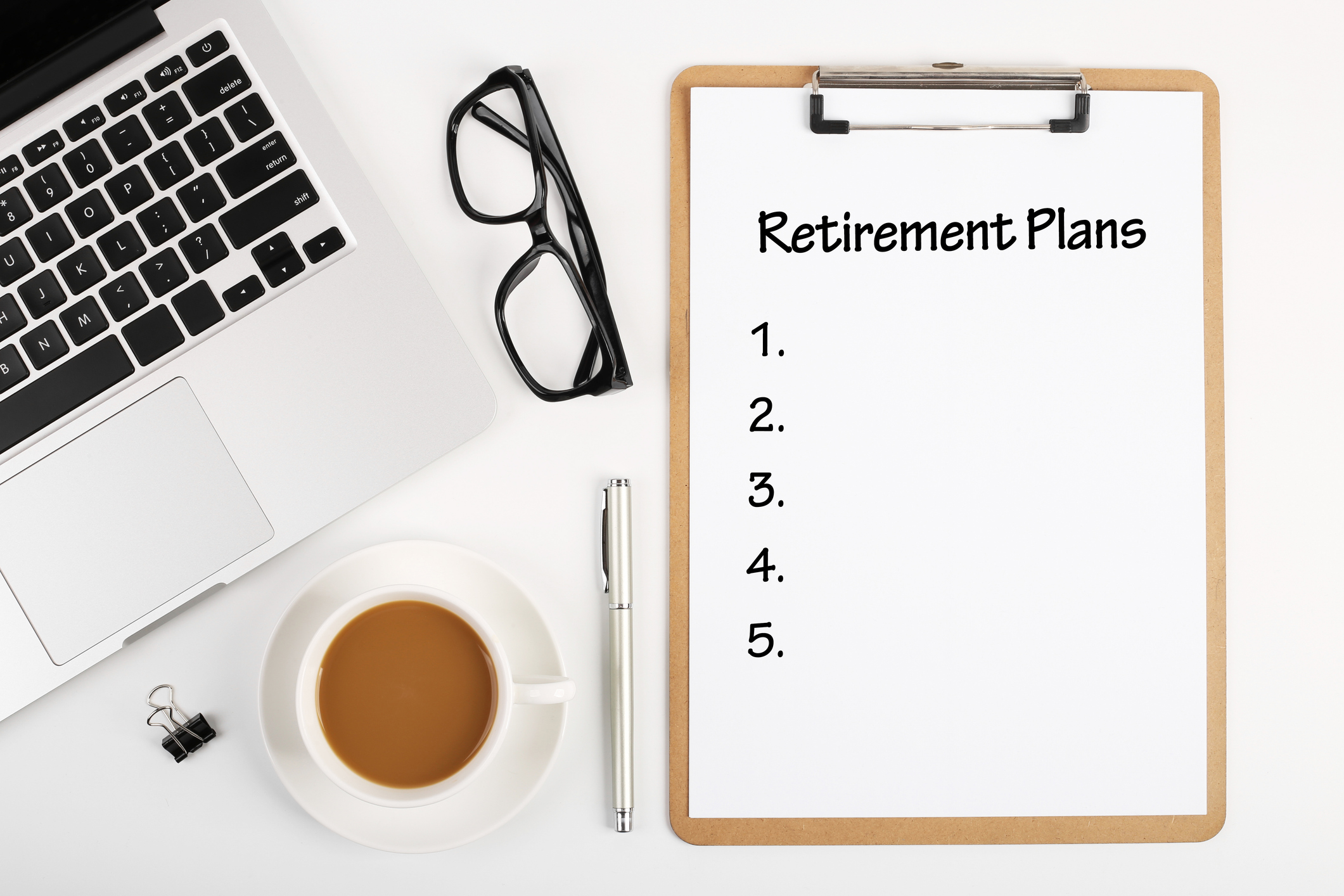Are There Cracks in Your Pension Plan?
You're counting on pension benefits in retirement. But how secure is your pension plan? We offer some guidance, including a pension calculator, to help you find out.

Look up defined pension plans these days and words you don’t want to see associated with the money needed to secure your retirement come up: broke, crisis, underfunded.
It looks mighty scary, especially as the coronavirus keeps raging and the economy remains uncertain. The reality? Most plans are fine, though “a small but significant number are in trouble,” says Jean-Pierre Aubry, director of state and local research for the Center for Retirement Research at Boston College.
You’ll have to sort through the morass to know whether your plan is safe and, if it’s not, decide what, if anything, you can do. For more about that, keep reading.

Pensions: A Disappearing Benefit
Over the past 30 years, far fewer private companies have offered defined benefit pension plans, which guarantee their employees a monthly payment in retirement typically based on salary history and number of years worked. These plans have been steadily declining over the past 30 years and replaced (if at all) by defined contribution plans, such as 401(k)s. According to the Federal Bureau of Labor Statistics, the number of private defined benefit plans fell from around 103,000 in 1975 to just under 47,000 in 2017. By 2019, just 16% of private workers and 86% of state and local government employees had access to the plans.
In 1974, Congress passed one of the most important laws pertaining to private retirement and health plans, known as the Employee Retirement Income Security Act or ERISA. That law established the Pension Benefit Guaranty Corp. The PBGC is basically insurance, but only for private pension plans. It is largely funded by premiums collected from defined benefit plan sponsors. If a company terminates its pension plan, the PBGC steps in to administer and pay employees, but only to a point. No federal law covers public pensions of state, county and municipal workers as each state has the ultimate say there.
Private plans have two broad categories: single-employer and multiemployer. Single-employer plans are just what they sound like—a pension plan administered and paid for by one company. Almost 28 million Americans participate in such plans, according to a report by the Center for Retirement Research. Multiemployer plans, on the other hand, are negotiated by unions for employees in the same industry, such as construction or entertainment, and cover about 10 million Americans, the report states.

The Pension Benefits Plans in the Best Shape
“Single-employer plans are in good shape,” says John Kilgour, a professor emeritus in industrial and labor relations at California State University, East Bay.
Even the pandemic and grim economy aren’t cause for alarm because “the payments for pension benefits are made over many years, so any temporary downturn in overall funding should not impact benefits from a pension plan that is in otherwise good financial shape,” states the website of nonprofit consumer advocacy group the Pension Rights Center.
Some single-employer pension plans are underfunded, and the money they need to cover current and future pensions is not readily available. But that does not mean the pension plan will disappear if a company goes bankrupt. Federal law requires that promised benefits should be kept separate from an employer’s business assets and held in trust, says Norman Stein, a professor of law at the Kline School of Law at Drexel University and an adviser to the Pension Rights Center.
By law, companies can’t reduce defined pension benefits that employees, retired or not, have already accrued. Companies can, however, change the plan’s future benefits. In general, such plans “are very secure,” Aubry says. “There has been a series of regulations to make sure they’re essentially fully funded, even if your employer were to go under.”
If that happens, the PBGC has enough money to cover any losses. In fact, according to the PBGC’s own assessment, its funds for the single-employer program are expected to grow between 2019 and 2029 from $8.7 billion to $46.3 billion.
The benefits are capped, and the maximum monthly payout in 2021 for a 65-year-old in a single-employer plan is $6,034. That monthly maximum jumps to $18,343 for a 75-year-old. “Most employees get most or all of their benefits,” Stein says.
However, ERISA doesn’t cover—and therefore the PBGC doesn’t insure—religious organizations, professional practices (such as lawyers or doctors) with fewer than 25 employees, and a few select single-employer plans that affect a limited number of people. To find out if your company is insured by PBGC, ask your plan administrator for a “summary plan description,” which contains that information. You can also search the PBGC website for all single-employer company plans, although the list isn’t comprehensive.

Which Pension Payment Plans Are in Trouble?
The pension plan crisis often referred to on the news typically concerns about 130 multiemployer plans—out of a total of 1,400—that together cover roughly 1 million employees. Experts say these union multiemployer plans are in jeopardy for a number of reasons, including the decline or deregulation of certain industries, company bankruptcies that have led to a decrease in plan contributions, and massive declines in union membership that have left some plans with more retirees than active workers.
Many employers are also forced to pay the benefits of so-called “orphans,” participants whose employers left the plans, Aubry says, noting that orphans make up 30% of the participants in the most troubled plans. Worse, the PBGC projects that its multiemployer fund will run out of money by 2026 and expects some 124 plans to be insolvent within 20 years.
One reason the PBGC is better funded to cover single-employer pensions is that these companies paid a much higher premium to the agency than multiemployer plans did, Kilgour says. If you are part of a multiemployer plan and it terminates, the maximum the PBGC will pay out is a far smaller sum than for a single-employer plan—generally, no more than about $12,000 annually and often less.
For multiemployer plans, trustees are required to let people know the status of their plan through a color-coded mechanism. Broadly, plans in the green zone are doing okay, those in the yellow zone are endangered and those in the red zone are critical, meaning they have serious and immediate funding problems.
In an effort to address the multiemployer pension plan crisis, Congress passed the Kline-Miller Multiemployer Pension Reform Act of 2014. It allows trustees of such plans to apply to the Treasury Department to reduce benefits—including for those already retired—to avoid running out of money, although it’s a difficult and complicated process.
A handful of plans have been granted that reduction, says David Brenner, national director of multiemployer consulting for Segal, a company specializing in actuarial services and employee plan benefits. “It’s the lesser of two evils. If the plan becomes insolvent, then employees will get the PBGC benefit amount, which would be significantly less than what they would otherwise get.” The law prohibits cutting benefits for people over 80 years old or who are disabled, Stein says.
If your plan is in danger of running out of money, you must receive a “notice of insolvency” alerting you about any cuts to your benefits. The Treasury Department lists plans that have applied for benefit suspensions and the status of each. The Pension Rights Center offers an online calculator to check how much your benefits could conceivably be cut under the pension reform legislation.
One bright spot: Work is underway in Congress to address the issue, Stein says. “The important thing is there have been proposals on both sides of the aisle to help rescue the failing plans so people don’t experience deep benefit cuts.”

State, or Public, Pension Plans Run the Gamut
Public pensions cover people who work for state and local governments, and these plans are facing a number of major challenges. The media has been filled with alarming news about the status of public plans, especially in states with severely underfunded plans.
There’s no one answer to how safe a public pension is. Some states, such as Wisconsin, South Dakota and Tennessee, are well-funded at 80% or above, while others at the bottom of the list, such as Kentucky, Illinois and New Jersey, are down in the 30s.
The Pew Charitable Trusts, in a brief issued this year, stated that the gap between state retirement assets and liabilities is at a historic high, with just seven states funded at 90% and nine states at less than 60%. The brief offers a state-by-state look at assets, liabilities and funded ratio.
Although that doesn’t sound good, many say the perception that public pensions are in imminent danger of collapsing is overblown. “It varies from locale to locale and state to state,” says Bill Hallmark, a consulting actuary for Cheiron, an actuarial consulting company. “The vast majority of public plans pose very little risk to retirees.”
One point he stresses: “There is nothing magical about being 80% funded. This is a myth that the actuarial profession has worked hard to debunk. The pension plan depends on many factors besides funded status, so you can’t draw a firm conclusion solely because the plan is 80%, 60% or 30% funded. Obviously, higher funded ratios are generally better, but the real concern is whether the sponsors have the resources to pay for any shortfall over time.”
States, not federal law, regulate all public pensions for that state, and states cannot declare bankruptcy. But depending on the state, a municipality can—Detroit famously did so in 2013.
If you learn, for example, that the state college system you have a pension with might be going bankrupt, it is cause for concern, Hallmark says. Still, with public entities, “the first place they go to restructure debt is the bondholders,” he says. “Pensions would not be the first thing cut.”
The legal protections for public pensions also vary by state. The National Conference on Public Employee Retirement Systems offers a summary of provisions in all states.
States have been unsuccessful in reducing pension benefits for government workers, says Bridget Early, executive director of the nonprofit National Public Pension Coalition. Illinois passed a law to scale back government workers’ benefits and was sued; in 2015 the U.S. Supreme Court ruled the law unconstitutional. “States and policymakers have been unable to move the goalposts for retirees and current employees, whether they are vested or not, because those plans are part of a contract,” Early says.
In some cases, however, she adds, state legislatures can make other changes, such as to cost-of-living adjustments, because they are not included in the initial pension formula. Plans are likely to be much less generous for future employees, she adds.

What Can You Do About Your Pension Benefits?
Under federal law all private pension plans are required to notify beneficiaries of their financial status by mail every year. It’s tempting to ignore these notifications, but don’t. At a minimum, read the summary, and keep them. “One of the most powerful things an individual can do is have a copy of the pension plan rules that govern their plans,” says Jennifer Anders-Gable, a managing attorney for Legal Services of Northern California, which runs a pension assistance program for those who have lived or worked in California, Arizona, Nevada and Hawaii.
The notices will tell you among other things:
- The name of the plan and contact information.
- Whether the plan is 100% funded or not.
- The number of participants receiving benefits.
- The total assets and liabilities of the plan for the current year and two preceding years.
- A description of benefits insured by the PBGC and any limitations on benefits that apply.
Although public pension plans are not required to provide annual notices, Hallmark says they must distribute annual financial reports, and it is worth looking at the executive summary or the report’s highlights.
If you don’t know how to find the report, contact your human resources department or union if you belong to one. Just understand, he adds, that if you see the pension is 60% funded, that does not mean you’ll be getting only 60% of your pension.
Also, keep records. Pension plans are often bought or sold. Without any records, it can be hard to track down information about your pension benefits when you need it. The PBGC booklet “Finding a Lost Pension” can help you track down your plan. If you have questions, PensionHelp America, part of the Pension Rights Center, will help you find—for free—legal advisers, counseling services or government agencies if you should need them.
Although not all plans offer this option, you may be able to take your pension on a monthly basis or as one lump sum. Generally speaking, most advisers don’t recommend taking the one-time payout. The exceptions might be if you have a terminal illness and need funds immediately, are very young—say, in your 30s—when you get the pension, or are very wealthy, Stein says.
If you have zero confidence in your pension plan and no safety net exists, a lump sum is a possibility, Anders-Gable says, but the downsides are severe. “When you take the lump sum, there’s no survivor benefits,” she says.
Plus, while people may believe they can invest their one-time payout and generate better returns than their plan does, a Metlife 2017 survey found that 21% of retirement plan participants who took a lump sum depleted it in 5.5 years, on average.
Ron Guay, 45, a certified financial planner with Rivermark Wealth Management in Sunnyvale, Calif., has had both personal and professional experience with this issue. He left General Electric after 17 years, in 2014, with a pension plan and was offered the option of taking it all rather than as a monthly annuity that would begin paying out when he turned 60. “I took the lump sum last year,” he says.
He determined that having the cash in hand to invest for 15 years before the monthly benefit would even begin made the buyout very attractive. Investing with a relatively modest 6% return would allow him, at age 60, to withdraw the same amount of money well into old age as his pension would have offered, and the balance would never go to zero. “I believe I can do better than 6%, and I’m comfortable managing the money,” he says. “I’m not comfortable scanning my newsfeed every morning and hoping GE hasn’t gone bankrupt.”
This option isn’t for everyone, Guay says, especially if you’re uncomfortable managing your own money or hiring someone to do it. Ask yourself if you can get a 5% or 6% annual return on your investment, withdraw what would have been your monthly pension (or more) and never run out. “There’s a risk in either choice,” he says. “You have to choose the side that causes you less anxiety.”
Profit and prosper with the best of Kiplinger's advice on investing, taxes, retirement, personal finance and much more. Delivered daily. Enter your email in the box and click Sign Me Up.
Alina Tugend is a long-time journalist who has worked in Southern California, Rhode Island, Washington, D.C., London and New York. From 2005 to 2015, she wrote the biweekly Shortcuts column for The New York Times business section, which received the Best in Business Award for personal finance by the Society of American Business Editors and Writers. Her work has appeared in numerous publications, including The Times, The Atlantic, O, the Oprah Magazine, Family Circle and Inc. magazine. In 2011, Riverhead published Tugend's first book, Better by Mistake: The Unexpected Benefits of Being Wrong.
-
 Your Guide to Buying Art Online
Your Guide to Buying Art OnlineFrom virtual galleries to social media platforms, the internet offers plenty of places to shop for paintings, sculptures and other artwork without breaking the bank.
-
 Samsung Galaxy S25 Ultra for $4.99 a Month: A Closer Look at Verizon’s Deal
Samsung Galaxy S25 Ultra for $4.99 a Month: A Closer Look at Verizon’s DealVerizon’s aggressive pricing makes Samsung’s top-tier phone tempting, but the real cost depends on your plan and how long you stay.
-
 I'm 59 with $1.7 million saved and lost my job. Should I retire?
I'm 59 with $1.7 million saved and lost my job. Should I retire?We asked professional wealth planners for advice.
-
 10 Retirement Tax Plan Moves to Make Before December 31
10 Retirement Tax Plan Moves to Make Before December 31Retirement Taxes Proactively reviewing your health coverage, RMDs and IRAs can lower retirement taxes in 2025 and 2026. Here’s how.
-
 The Rubber Duck Rule of Retirement Tax Planning
The Rubber Duck Rule of Retirement Tax PlanningRetirement Taxes How can you identify gaps and hidden assumptions in your tax plan for retirement? The solution may be stranger than you think.
-
 What to Do With Your Tax Refund: 6 Ways to Bring Growth
What to Do With Your Tax Refund: 6 Ways to Bring GrowthUse your 2024 tax refund to boost short-term or long-term financial goals by putting it in one of these six places.
-
 What Does Medicare Not Cover? Eight Things You Should Know
What Does Medicare Not Cover? Eight Things You Should KnowMedicare Part A and Part B leave gaps in your healthcare coverage. But Medicare Advantage has problems, too.
-
 12 Great Places to Retire in the Midwest
12 Great Places to Retire in the MidwestPlaces to live Here are our retirement picks in the 12 midwestern states.
-
 15 Cheapest Small Towns to Live In
15 Cheapest Small Towns to Live InThe cheapest small towns might not be for everyone, but their charms can make them the best places to live for plenty of folks.
-
 15 Reasons You'll Regret an RV in Retirement
15 Reasons You'll Regret an RV in RetirementMaking Your Money Last Here's why you might regret an RV in retirement. RV-savvy retirees talk about the downsides of spending retirement in a motorhome, travel trailer, fifth wheel, or other recreational vehicle.
-
 The 24 Cheapest Places To Retire in the US
The 24 Cheapest Places To Retire in the USWhen you're trying to balance a fixed income with an enjoyable retirement, the cost of living is a crucial factor to consider. Is your city the best?
